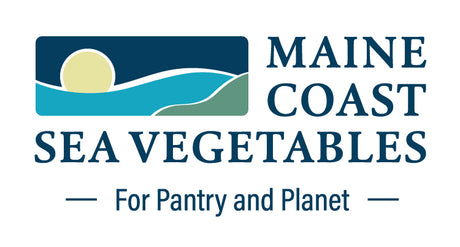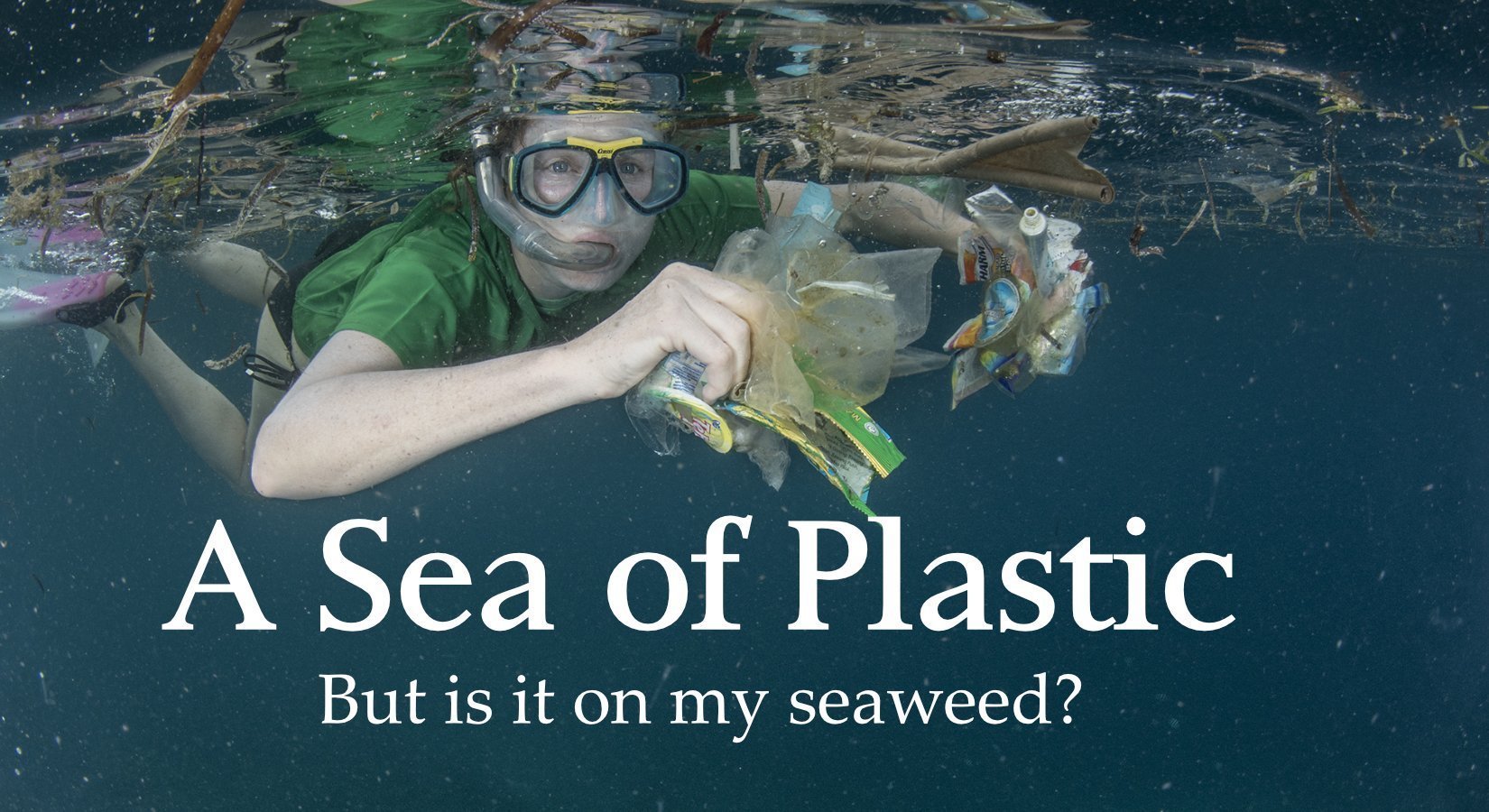This post was updated on June 14, 2023. Look for the red UPDATES.
Most people know that plastic waste is a big problem for the oceans and marine life. According to the Ocean Conservancy, a truckload of plastic garbage enters the ocean every minute of every day, year-round. Even the most remote wild beaches are now littered with plastic debris, and immense, swirling gyres of plastic have been discovered in all the worlds’ major oceans.
A recent paper published in Science Direct estimates the economic costs from plastic pollution could be as high as $2.5 trillion per year in lost marine ecosystem services.

Photo Credit: Pete Oxford, Courtesy Adventure Scientists
Eventually, this plastic breaks down into smaller and smaller fragments from the sun and the relentless waves. Fragments less than 5 millimeters (about the size of a sesame seed) are known as microplastics. Microplastics come from multiple sources beyond the degradation of plastic garbage. Cosmetic products, including toothpaste, hand soaps, and facial scrubs can include plastic microbead exfoliating agents.
Synthetic clothing fibers such as polyester, nylon, acrylics, and fleece are all types of plastic, and when this clothing gets washed thousands of tiny plastic microfibers are released into the water, with a percentage eventually making their way into the ocean. (Check out this site for a remedy to that problem: https://coraball.com/ ). Wear and tear from car and truck tires is a significant contributor of microplastics to the environment and may be responsible for as much as 5 – 10% of microplastics in the ocean.
It all adds up to a sea of plastic.

Photo Credit: The Shaw Institute
Plastic in our oceans
Naturally, this raises concern with lovers of seafood that sea life is not only threatened by plastic but also contaminated with it. There is reason for concern on both fronts. Sometimes the threat to wildlife is obvious, such as when dead whales wash ashore with stomachs full of plastic, or when we hear about sea turtles eating plastic bags because they resemble jellyfish. These are macro-plastics, and therefore it’s easy to see the problem.
The threat magnitude posed by microplastics to marine life remains largely unknown. Studies have shown that numerous marine organisms including annelids (worms), crustaceans, sea cucumbers, and even tiny zooplankton ingest microplastics. Filter feeders such as oysters and mussels readily ingest plastic particles in the 1 – 500 µm range, as seen in this Ocean Wise video mussels and microplastics. However, very few studies have reliably and consistently demonstrated negative impacts.
The science is still emerging and we should be cautious to not jump to conclusions. The good news, according to this report by the Food and Agriculture Organization Microplastics in Fisheries and Aquaculture, seems to be that, so far, people likely consume only negligible amounts of microplastics when they eat seafood.
Seaweed and plastic
This brings us to seaweed. Is there a danger that sea vegetables contain or are coated by microplastics? Does Maine Coast Sea Vegetables test for this type of contamination? How many microplastics are in the Gulf of Maine, anyways? Scientists at the Shaw Institute in Blue Hill, Maine and the College of the Atlantic have enumerated microplastics along the Maine coast and in other waters. As one can imagine, it’s not easy finding (let alone counting) microscopic particles in water.
The Shaw Institute, using a method they developed, counted an average of 17 microplastic particles per liter of seawater collected from Blue Hill and Penobscot Bays. Interestingly, Abigail Barrows of the College of the Atlantic found consistently more microplastics in open ocean waters compared to coastal waters, sometimes at the rate of two dozen per liter. But again, the science is still emerging and methods for how best to count and identify microplastics vary between researchers.
UPDATE
A new article published in the Maine Policy Review (Law et al, 2023, Plastic Marine Pollution in the Gulf of Maine) sheds more light on microplastic occurrence in the Gulf of Maine (GoM). The authors report on an analysis of microplastics and plastic debris collected in surface-towed plankton nets. Since 1987, Sea Education Association (SEA) scientists have led student research that includes measuring plastic pollution in the GoM. Students conduct oceanographic research from a tall sailing ship for up to 6 weeks during the summer, while also honing their sailing skills. The sailing boat towed neuston nets with very fine mesh and the students cataloged and archived everything captured larger than 0.3mm. In 2022 every archived bit of plastic collected between 2017 - 2021 was characterized by size, shape, and color.
Some interesting findings emerged. Reassuringly, the authors report that microplastic concentrations in the GoM were low, with more than 50% of tows (266/517) containing no visible plastic. Perhaps unsurprisingly given Maine’s fishing tradition, linear plastic fibers similar to those in fishing rope were the 2nd most dominant plastic. Many of the microplastics appeared “young” based on color and other characteristics, leading the authors to hypothesize that floating plastic has a short retention time in the GoM due to the ocean currents that routinely flush through it. Less encouragingly, however, the authors report that macro-plastic pollution (plastic bleach, oil, and beverage containers, balloons, fishing gear, etc.) continues to be a problem on remote island beaches despite decades of clean-up efforts. As they degrade, these macro-plastics can become a source of microplastic.
Since we know microplastics are found in the Gulf of Maine, does that mean they’re on our sea vegetables? Fortunately, macroalgae don’t consume random particles of food or filter seawater like filter feeders do. This means if microplastics are present, they would be on the surface of the seaweed and not within.
So far, only two studies have investigated the interaction of microplastics with seaweed, and both were done in the lab, where bladderwrack (Fucus vesiculosus) was exposed to artificially high concentrations; the first study exposed bladderwrack to 600 particles per liter of seawater and the 2nd to about 600,000 particles per liter, which is more than 3,000 times anything observed in the ocean!
It’s no wonder the microplastics were subsequently found on the bladderwrack, but these studies only tell us what’s theoretically possible in a lab setting. They’re limited to one species (bladderwrack) exposed to one specific type of microplastic (polystyrene) at unnaturally high levels. It would be difficult and potentially misleading to apply these results to what occurs in the environment.
Unlike other testing MCSV does for microbes, heavy metals, and pesticides, there isn’t yet an established standardized methodology for detecting and counting microplastics on seaweed. Even the most recent research articles have relied upon laborious microscopic analysis to identify microplastics. Recently, a method developed for testing bottled water, known as Fourier Transform Infrared (FTIR) spectrometry, was adapted for seaweed. FTIR relies on the fact that microplastics selectively absorb certain dyes such as Nile red, and in 2018 a batch of our alaria powder was tested in this fashion.
We are happy to report this test detected absolutely no microplastics on our alaria. FTIR comes with a very high set up fee followed by an expensive per test fee, so microplastics won’t be part of our annual testing regime until the need becomes more apparent and the testing less costly.
UPDATE
A recent article in the journal Food Chemistry (Xiao et al, 2023 Seaweeds as a major source of dietary microplastics exposure in East Asia) does show grounds for concern regarding seaweed from certain areas. The authors report that two commonly consumed seaweeds in East Asia, kelp (Saccharina japonica) and nori (Pyropia yezoensis), were widely contaminated with plastic microfibers. Because seaweed is so important in Asian cuisine, consumption of these species was estimated to contribute up to 45.5% of overall dietary exposure, making seaweed the most significant contributor of microplastics in the Chinese diet.
The authors note that the two seaweed species they studied are extensively farmed in Asia. Furthermore, aquaculture is considered a significant source of marine microfibers in Asian waters and over 90% of the microplastics found on farmed kelp and nori were fibers. Although the authors don’t make the connection, farmed seaweed is mostly grown on synthetic plastic lines, and close proximity could be why the two farmed seaweeds had such high levels of plastic microfibers.
This is obviously not good news for Maine seaweed farmers, but hope is on the horizon. Development of biodegradable seaweed bioplastics that don’t contain any petrochemicals is rapidly advancing, and the Maine-based company Viable Gear is using seaweed to make a plastic replacement for the fishing and aquaculture industries. They have already developed a seaweed seeding twine made from seaweed and it’s just a matter of time until larger ropes made from seaweed are also developed. We at MCSV are rooting for Viable Gear’s success, and the company is well worth following by subscribing.
Where does this leave us? We believe, based on the limited testing to date and the relatively low concentrations of microplastics in the GoM relative to other oceans, that GoM sea vegetables pose little to no risk when it comes to ingesting microplastics. Unfortunately, we can’t confidently say the same about imported seaweed from Asia because of what the study described above found.
In fact, inhalation may be of greater concern than ingestion because microplastics, especially very small fibers, can easily become airborne and inhaled. A study reported in the article Plastic and Human Health: A Micro Issue? found substantially higher levels of airborne microplastics in an urban area of Paris compared to more rural areas. Microplastics were literally falling down with the rain. Avoiding seaweed, or any other food for that matter, to reduce microplastic exposure is unlikely to make much difference due to their widescale prevalence. A better solution is to tackle the problem at its source by minimizing the plastic we use on a daily basis.
This is no easy task considering how useful and inexpensive plastic is. To take just one example, cooking oils are mostly packaged in plastic bottles because packaging them in glass is more expensive. Any major company that switched entirely to glass bottles for cooking oils would probably see a dramatic sales decline combined with increased production costs. Few regular people can afford to pay more than they have to for groceries. Fortunately, there are solutions to the problems with plastics. Maine was the first state to ban 100% Styrofoam and in 2021 it became the 2nd state to ban single-use plastic bags. A big step forward occurred when President Obama signed the Microbead-Free Waters Act of 2015 banning plastic microbeads in rinse-off cosmetics. Recently it was announced that scientists had created a fully recyclable new plastic; currently, most reusable plastics are only 20 – 30% recyclable.
Maine Coast Sea Vegetable continues to use plastic packaging because no other material is both lightweight and impermeable to air and water. These qualities are essential for shipping, food safety, and long shelf life. Glass, while impermeable, is heavy and has a higher carbon footprint than plastic. Paper, while lightweight, is not impermeable, which shortens the shelf life of dried seaweed and leads to waste. The fact remains that plastic is a highly useful material offering unparalleled advantages for food preservation, safety, and transportation. In 2008 we switched to using a biodegradable and compostable bag, which breaks down in nine months to five years depending on environmental conditions. We’re optimistic that new and environmentally friendly packaging solutions will emerge within a decade.



